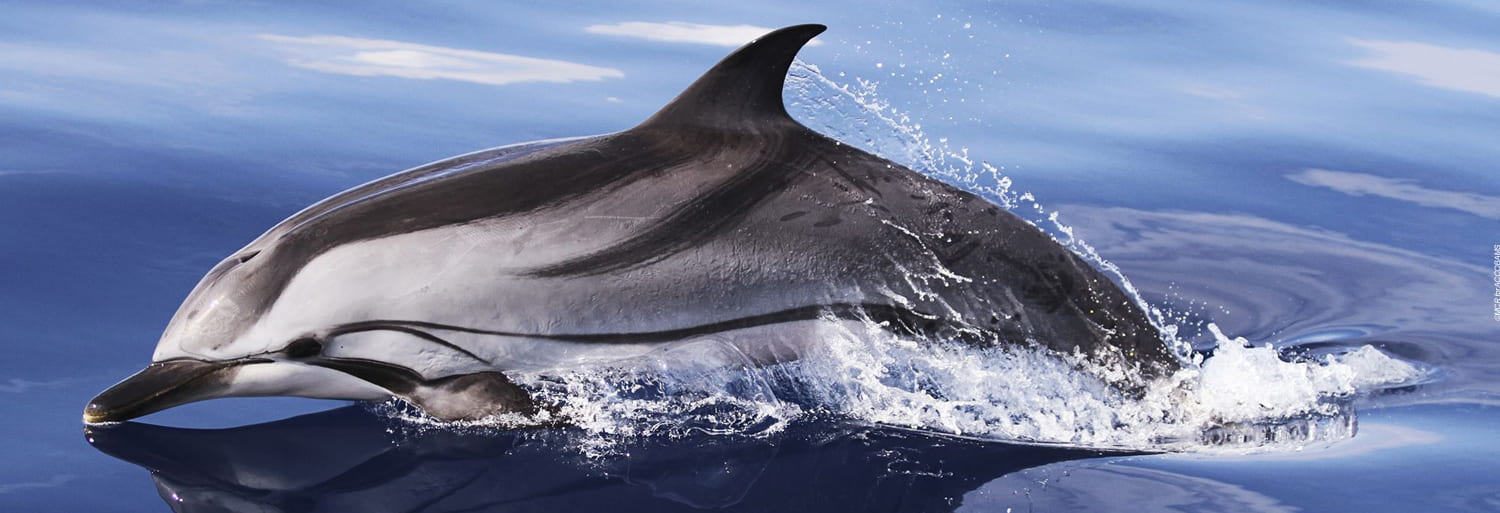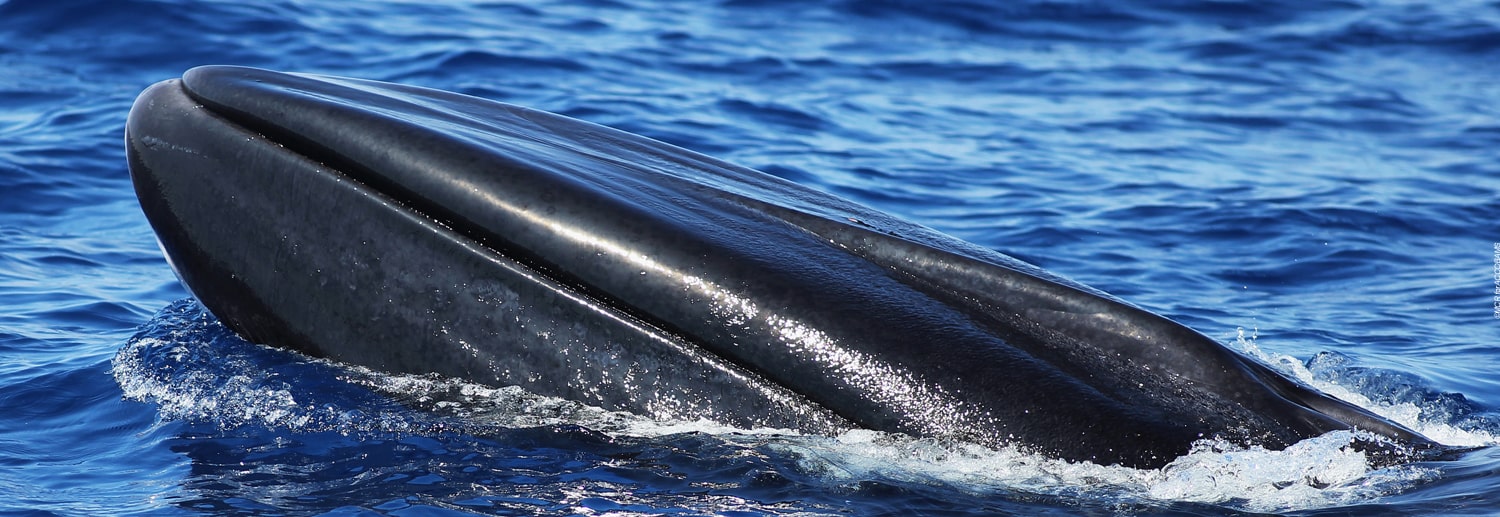Agreement text
ACCOBAMS Agreement Text in the five official languages available for download.
 |  |  |  |  |
AGREEMENT ON THE CONSERVATION OF CETACEANS OF THE BLACK SEA, MEDITERRANEAN SEA AND CONTIGUOUS ATLANTIC AREA
The Parties,
Recalling that the Convention on the Conservation of Migratory Species of Wild Animals, 1979, encourages international co‐operative action to conserve migratory species;
Recalling further that the third meeting of the Conference of the Parties to the Convention, held in Geneva in September 1991, urged Range States to collaborate with a view to concluding, under the Convention’s auspices, a multilateral agreement for the conservation of small cetaceans of the Mediterranean and Black Seas;
Recognizing that cetaceans are an integral part of the marine ecosystem which must be conserved for the benefit of present and future generations, and that their conservation is a common concern;
Recognizing the importance of integrating actions to conserve cetaceans with activities related to the socio‐economic development of the Parties concerned by this Agreement, including maritime activities such as fishing and the free circulation of vessels in accordance with international law;
Aware that the conservation status of cetaceans can be adversely affected by factors such as degradation and disturbance of their habitats, pollution, reduction of food resources, use and abandonment of non‐selective fishing gear, and by deliberate and incidental catches;
Convinced that the vulnerability of cetaceans to such threats warrants the implementation of specific conservation measures, where they do not already exist, by States or regional economic integration organizations that exercise sovereignty and/or jurisdiction over any part of their range, and by States, flag vessels of which are engaged outside national jurisdictional limits in activities that may affect the conservation of cetaceans;
Stressing the need to promote and facilitate co‐operation among States, regional economic integration organizations, intergovernmental organizations and the non governmental sector for the conservation of cetaceans of the Black Sea, Mediterranean Sea, the waters which interconnect these seas, and the contiguous Atlantic area;
Convinced that the conclusion of a multilateral agreement and its implementation through co‐ordinated, concerted actions will contribute significantly to the conservation of cetaceans and their habitats in the most efficient manner, and will have ancillary benefits for other species;
Acknowledging that, despite past or ongoing scientific research, knowledge of the biology, ecology, and population dynamics of cetaceans is deficient, and that it is necessary to develop cooperation for research and monitoring of these species in order to fully implement conservation measures;
Acknowledging further that effective implementation of such an agreement will require that assistance be provided, in a spirit of solidarity, to some Range States for research, training, and monitoring of cetaceans and their habitats, as well as for the establishment or improvement of scientific and administrative institutions;
Recognizing the importance of other global and regional instruments of relevance to the conservation of cetaceans, signed by many Parties, such as the International Convention for the Regulation of Whaling, 1946; the Convention for the Protection of the Mediterranean Sea against Pollution, 1976, its related protocols and the Action Plan for the Conservation of Cetaceans in the Mediterranean Sea adopted under its auspices in 1991; the Convention on the Conservation of European Wildlife and Natural Habitats, 1979; the United Nations Convention on the Law of the Sea, 1982; the Convention on Biological Diversity, 1992; the Convention for the Protection of the Black Sea against Pollution, 1992; and the Global Plan of Action for the Conservation, Management and Utilization of Marine Mammals of the United Nations Environment Programme, adopted in 1984; as well as initiatives of inter alia the General Fisheries Council for Mediterranean, the International Commission for Scientific Exploration of the Mediterranean, and the International Commission for the Conservation of Atlantic Tunas;
Have agreed as follows:
Article I
Scope, Definitions and Interpretation
1. a) The geographic scope of this Agreement, hereinafter referred to as the “Agreement area”, is constituted by all the maritime waters of the Black Sea and the Mediterranean and their gulfs and seas, and the internal waters connected to or interconnecting these maritime waters, and of the Atlantic area contiguous to the Mediterranean Sea west of the Straits of Gibraltar. For the purpose of this Agreement:
– the Black Sea is bounded to the southwest by the line joining Capes Kelaga and Dalyan (Turkey);
– the Mediterranean Sea is bounded to the east by the southern limits of the Straits of the Dardanelles between the lighthouses of Mehmetcik and Kumkale (Turkey) and to the west by the meridian passing through Cape Spartel lighthouse, at the entrance to the Strait of Gibraltar; and
– the contiguous Atlantic area west of the Strait of Gibraltar is bounded to the east by the meridian passing through Cape Spartel lighthouse and to the west by the line joining the lighthouses of Cape St. Vicente (Portugal) and Casablanca (Morocco).
b) Nothing in this Agreement nor any act adopted on the basis of this Agreement shall prejudice the rights and obligations, the present and future claims or legal views of any State relating to the law of the sea or to the Montreux Convention of 20 July 1936 (Convention concernant le régime des détroits), in particular the nature and the extent of marine areas, the delimitation of marine areas between States with opposite or adjacent coasts, freedom of navigation on the high seas, the right and the modalities of passage through straits used for international navigation and the right of innocent passage in territorial seas, as well as the nature and extent of the jurisdiction of the coastal State, the flag State and the port State.
c) No act or activity undertaken on the basis of this Agreement shall constitute grounds for claiming, contending or disputing any claim to national sovereignty or jurisdiction.
2. This Agreement applies to all cetaceans that have a range which lies entirely or partly within the Agreement area or that accidentally or occasionally frequent the Agreement area, an indicative list of which is contained in Annex 1 to this Agreement.
3. For the purpose of this Agreement:
a) “Cetaceans” means animals, including individuals, of those species, subspecies or populations of Odontoceti or Mysticeti;
b) “Convention” means the Convention on the Conservation of Migratory Species of Wild Animals, 1979;
c) “Secretariat of the Convention” means the body established under Article IX of the Convention;
d) “Agreement secretariat” means the body established under Article III, paragraph 7, of this Agreement;
e) “Scientific Committee” means the body established under Article III, paragraph 7, of this Agreement;
f) “Range” means all areas of water that a cetacean inhabits, stays in temporarily, or crosses at any time on its normal migration route within the Agreement area.
g) “Range State” means any State that exercises sovereignty and/or jurisdiction over any part of the range of a cetacean population covered by this Agreement, or a State, flag vessels of which are engaged in activities in the Agreement area which may affect the conservation of cetaceans;
h) “Regional economic integration organization” means an organization constituted by sovereign States which has competence in respect of the negotiation, conclusion and application of international agreements in matters covered by this Agreement;
i) “Party” means a Range State or a regional economic integration organization for which this Agreement is in force;
j) “Sub‐region”, depending on the particular context, means either the region comprising the coastal States of Black Sea or the region comprising the coastal States of the Mediterranean Sea and the contiguous Atlantic area; any reference in the Agreement to the States of a particular sub‐region shall be taken to mean the States which have any part of their territorial waters within that sub‐region, and States, flag vessels of which are engaged in activities which may affect the conservation of cetaceans in that sub‐region; and
k) “Habitat” means any area in the range of cetaceans where they are temporarily or permanently resident, in particular, feeding areas, calving or breeding grounds, and migration routes.
In addition, the terms defined in Article I, subparagraphs 1 a) to e), and i) of the Convention shall have the same meaning, mutatis mutandis, in this Agreement.
4. This Agreement is an agreement within the meaning of Article IV, paragraph 4, of the Convention.
5. The annexes to this Agreement form an integral part thereof, and any reference to the Agreement includes a reference to its annexes.
Article II
Purpose and Conservation Measures
1. Parties shall take co‐ordinated measures to achieve and maintain a favourable conservation status for cetaceans. To this end, Parties shall prohibit and take all necessary measures to eliminate, where this is not already done, any deliberate taking of cetaceans and shall co‐ operate to create and maintain a network of specially protected areas to conserve cetaceans.
2. Any Party may grant an exception to the prohibition set out in the preceding paragraph only in emergency situations as provided for in Annex 2, paragraph 6, or, after having obtained the advice of the Scientific Committee, for the purpose of non‐lethal in situ research aimed at maintaining a favourable conservation status for cetaceans. The Party concerned shall immediately inform the Bureau and the Scientific Committee, through the Agreement secretariat, of any such exception that has been granted. The Agreement secretariat shall inform all Parties of the exception without delay by the most appropriate means.
3. In addition, Parties shall apply, within the limits of their sovereignty and/or jurisdiction and in accordance with their international obligations, the conservation, research and management measures prescribed in Annex 2 to this Agreement, which shall address the following matters:
a) adoption and enforcement of national legislation;
b) assessment and management of human‐cetacean interactions;
c) habitat protection;
d) research and monitoring;
e) capacity building, collection and dissemination of information, training and education; and
f) responses to emergency situations.
Measures concerning fisheries activities shall be applied in all waters under their sovereignty and/or jurisdiction and outside these waters in respect of any vessel under their flag or registered within their territory.
4. In implementing the measures prescribed above, the Parties shall apply the precautionary principle.
Article III
Meeting of the Parties
1. The Meeting of the Parties shall be the decision‐making body of this Agreement.
2. The Depositary shall convene, in consultation with the Secretariat of the Convention, a session of the Meeting of the Parties to this Agreement not later than one year after the date of its entry into force. Thereafter, the Agreement secretariat shall convene, in consultation with the Secretariat of the Convention, ordinary sessions of the Meeting of the Parties at intervals of not more than three years, unless the Meeting of the Parties decides otherwise.
3. The Agreement secretariat shall convene an extraordinary session of the Meeting of the Parties on the written request of at least two thirds of the Parties.
4. The United Nations, its Specialized Agencies, the International Atomic Energy Agency, any State not a Party to this Agreement, secretariats of other global and regional conventions or agreements concerned inter alia with the conservation of cetaceans, and regional or sub‐ regional fisheries management organizations with competence for species found temporarily or permanently resident in the Agreement area may be represented by observers in sessions of the Meeting of the Parties. Any other agency or body technically qualified in the conservation of cetaceans may be represented at sessions of the Meeting of the Parties by observers, unless at least one third of the Parties present object. Once admitted to a session of the Meeting of the Parties, an observer shall continue to be entitled to participate in future sessions unless one third of the Parties object at least thirty days before the start of the session.
5. Only Parties have the right to vote. Each Party shall have one vote. Regional economic integration organizations which are Parties to this Agreement shall exercise, in matters within their competence, their right to vote with a number of votes equal to the number of their member States which are Parties to the Agreement. A regional economic integration organization shall not exercise its right to vote if its member States exercise theirs and vice versa.
6. All decisions of the Meeting of the Parties shall be adopted by consensus except as otherwise provided in Article X of this Agreement. However, if consensus cannot be achieved in respect of matters covered by the annexes to the Agreement, a decision may be adopted by a two thirds majority of the Parties present and voting. In the event of a vote, any Party may, within one hundred and fifty days, notify the Depositary in writing of its intention not to apply the said decision.
7. At its first session, the Meeting of the Parties shall:
a) adopt its rules of procedure;
b) establish an Agreement secretariat to perform the secretariat functions listed in Article IV of this Agreement;
c) designate in each sub‐region, within an existing institution, a Co‐ordination unit to facilitate implementation of the measures prescribed in Annex 2 to this Agreement;
d) elect a Bureau as provided for in Article VI;
e) establish a Scientific Committee, as provided for in Article VII; and
f) decide on the format and content of Party reports on the implementation of the Agreement, as provided for in Article VIII.
8. At each of its ordinary sessions, the Meeting of the Parties shall:
a) review scientific assessments of the conservation status of cetaceans of the Agreement area and the habitats which are important to their survival, as well as the factors which may affect them unfavourably;
b) review the progress made and any difficulties encountered in the implementation of this Agreement on the basis of the reports of the Parties and of the Agreement secretariat;
c) make recommendations to the Parties as it deems necessary or appropriate and adopt specific actions to improve the effectiveness of this Agreement;
d) examine and decide upon any proposals to amend, as may be necessary, this Agreement;
e) adopt a budget for the next financial period and decide upon any matters relating to the financial arrangements for this Agreement;
f) review the arrangements for the Agreement secretariat, the Co‐ordination units and the Scientific Committee;
g) adopt a report for communication to the Parties to this Agreement and to the Conference of the Parties of the Convention;
h) agree on the provisional time and venue of the next meeting; and
i) deal with any other matter relating to implementation of this Agreement.
Article IV
Agreement Secretariat
1. Subject to the approval of the Conference of the Parties to the Convention, an Agreement secretariat shall be established within the Secretariat of the Convention. If the Secretariat of the Convention is unable, at any time, to provide this function, the Meeting of the Parties shall make alternative arrangements.
2. The functions of the Agreement secretariat shall be:
a) to arrange and service the sessions of the Meeting of the Parties;
b) to liaise with and facilitate co‐operation between Parties and non‐Party Range States, and international and national bodies whose activities are directly or indirectly relevant to the conservation of cetaceans in the Agreement area;
c) to assist the Parties in the implementation of this Agreement, ensuring coherence between the sub‐regions and with measures adopted pursuant to other international instruments in force;
d) to execute decisions addressed to it by the Meeting of the Parties;
e) to invite the attention of the Meeting of the Parties to any matter pertaining to this Agreement;
f) to provide to each ordinary session of the Meeting of the Parties a report on the work of the Agreement secretariat, the Co‐ordination units, the Bureau, and the Scientific Committee, and on the implementation of the Agreement based on information provided by the Parties and other sources;
g) to administer the budget for this Agreement;
h) to provide information to the general public concerning this Agreement and its objectives; and
i) to perform any other function entrusted to it under this Agreement or by the Meeting of the Parties.
3. The Agreement secretariat, in consultation with the Scientific Committee and the Co‐ ordination units, shall facilitate the preparation of guidelines covering inter alia:
a) the reduction or elimination, as far as possible and for the purposes of this Agreement, of adverse human‐cetacean interactions;
b) habitat protection and natural resource management methods as they relate to cetaceans;
c) emergency measures; and
d) rescue methods.
Article V
Co‐ordination Units
1. The functions of the sub‐regional Co‐ordination units shall be:
a) to facilitate implementation in the respective sub‐regions of the activities provided for in Annex 2 to this Agreement, in accordance with instructions of the Meeting of the Parties;
b) to collect and evaluate information that will further the objectives and implementation of the Agreement and provide for appropriate dissemination of such information; and
c) to service meetings of the Scientific Committee and to prepare a report for communication to the Meeting of the Parties through the Agreement secretariat.
The designation of the Co‐ordination units and their functions shall be reviewed, as appropriate, at each session of the Meeting of the Parties.
2. Each Co‐ordination unit, in consultation with the Scientific Committee and the Agreement secretariat, shall facilitate the preparation of a series of international reviews or publications, to be updated regularly, including:
a) reports on the status and trends of populations, as well as gaps in scientific knowledge;
b) a sub‐regional directory of important areas for cetaceans; and
c) a sub‐regional directory of national authorities, research and rescue centres, scientists and non‐governmental organizations concerned with cetaceans.
Article VI
Bureau
1. The Meeting of the Parties shall elect a Bureau consisting of the Chairperson and Vice‐ Chairpersons of the Meeting of the Parties, and shall adopt rules of procedure for the Bureau, as proposed by the Agreement secretariat. The Chairperson of the Scientific Committee shall be invited to participate as an observer in the meetings of the Bureau. Whenever necessary, the Agreement secretariat shall provide secretariat services.
2. The Bureau shall:
a) provide general policy guidance and operational and financial direction to the Agreement secretariat and the Co‐ordination units concerning the implementation and promotion of the Agreement;
b)carry out, between sessions of the Meeting of the Parties, such interim activities on its behalf as may be necessary or assigned to it by the Meeting of the Parties; and
c) represent the Parties vis‐à‐vis the Government(s) of the host country (or countries) of the Agreement secretariat and the Meeting of the Parties, the Depositary and other international organizations on matters relating to this Agreement and its secretariat.
3. At the request of its Chairperson, the Bureau shall normally meet once per annum at the invitation of the Agreement secretariat, which shall inform all Parties of the date, venue and agenda of such meetings.
4. The Bureau shall provide a report on its activities for each session of the Meeting of the Parties which will be circulated to all Parties in advance of the session by the Agreement secretariat.
Article VII
Scientific Committee
1. A Scientific Committee, comprising persons qualified as experts in cetacean conservation science, shall be established as an advisory body to the Meeting of the Parties. The Meeting of the Parties will entrust the functions of the Scientific Committee to an existing organization in the Agreement area that assures geographically‐balanced representation.
2. Meetings of the Scientific Committee shall be convened by the Agreement secretariat at the request of the Meeting of the Parties.
3. The Scientific Committee shall:
a) provide advice to the Meeting of the Parties on scientific and technical matters having a bearing on the implementation of the Agreement, and to individual Parties between sessions, as appropriate, through the Co‐ordination unit of the sub‐region concerned;
b) advise on the guidelines as provided for in Article IV, paragraph 3, assess the reviews prepared in accordance with Annex 2 to this Agreement and formulate recommendations to the Meeting of the Parties relating to their development, contents and implementation;
c) conduct scientific assessments of the conservation status of cetacean populations;
d) advise on the development and co‐ordination of international research and monitoring programmes, and make recommendations to the Meeting of the Parties concerning further research to be carried out;
e) facilitate the exchange of scientific information and of conservation techniques;
f) prepare for each session of the Meeting of the Parties a report of its activities which shall be submitted to the Agreement secretariat not less than one hundred and twenty days before the session of the Meeting of the Parties and circulated forthwith by the Agreement secretariat to all Parties;
g) render timely advice on the exceptions of which it has been informed pursuant to Article II, paragraph 2; and
h) carry out, as may be necessary, other tasks referred to it by the Meeting of the Parties.
4. The Scientific Committee, in consultation with the Bureau and the respective Co‐ordination units, may establish working groups as may be necessary to deal with specific tasks. The Meeting of the Parties shall agree a fixed budget allocation for this purpose.
Article VIII
Communication and Reporting
Each Party shall:
a) designate a focal point for this Agreement, and shall communicate without delay the focal point’s name, address and telecommunication numbers to the Agreement secretariat, for prompt circulation to the other Parties and to the Co‐ordination units; and
b) prepare for each ordinary session of the Meeting of the Parties, beginning with the second session, a report on its implementation of the Agreement with particular reference to the conservation measures and scientific research and monitoring it has undertaken. The format of such reports shall be determined by the first session of the Meeting of the Parties and reviewed as may be necessary at any subsequent session. Each report shall be submitted to the Agreement secretariat not less than one hundred and twenty days before the opening of the session of the Meeting of the Parties for which it has been prepared, and copies shall be circulated forthwith to the other Parties by the Agreement secretariat.
Article IX
Financial Arrangements
1. The scale of contributions to the budget of this Agreement shall be determined by the Meeting of the Parties at its first session. No regional economic integration organization shall be required to contribute more than 2.5 per cent of the administrative costs.
2. Decisions relating to the budget and any changes to the scale of contributions that may be found necessary shall be adopted by the Meeting of the Parties by consensus.
3. The Meeting of the Parties may establish a supplementary conservation fund from voluntary contributions of Parties or from any other source in order to increase the funds available for monitoring, research, training and projects relating to the conservation of cetaceans.
4. Parties are also encouraged to provide technical and financial support on a bilateral or multilateral basis to assist Range States which are developing countries or countries with economies in transition to implement the provisions of this Agreement.
5. The Agreement secretariat shall undertake periodically a review of potential mechanisms for providing additional resources, including funds and technical assistance, for the implementation of this Agreement, and shall report its findings to the Meeting of the Parties.
Article X
Amendment of the Agreement
1. This Agreement may be amended at any ordinary or extraordinary session of the Meeting of the Parties.
2. Proposals for amendments to the Agreement may be made by any Party. The text of any proposed amendment and the reasons for it shall be communicated to the Agreement secretariat not less than one hundred and fifty days before the opening of the session. The Agreement secretariat shall transmit copies forthwith to the Parties. Any comments on the text by the Parties shall be communicated to the Agreement secretariat not less than sixty days before the opening of the session. The Secretariat shall communicate to the Parties, as soon as possible after the last day for submission of comments, all comments submitted by that day.
3. Any additional annex or any amendment to the Agreement other than an amendment to its annexes shall be adopted by a two thirds majority of the Parties present and voting and shall enter into force for those Parties which have accepted it on the thirtieth day after the date on which two thirds of the Parties to the Agreement at the date of the adoption of the additional annex or amendment have deposited their instruments of acceptance with the Depositary. For any Party that deposits an instrument of acceptance after the date on which two thirds of the Parties have deposited their instruments of acceptance, the additional annex or amendment shall enter into force on the thirtieth day after the date on which it deposits its instrument of acceptance.
4. Any amendment to an annex to the Agreement shall be adopted by a two thirds majority of the Parties present and voting and shall enter into force for all Parties on the one hundred and fiftieth day after the date of its adoption by the Meeting of the Parties, except for Parties that have entered a reservation in accordance with paragraph 5 of this Article.
5. During the period of one hundred and fifty days provided for in paragraph 4 of this Article, any Party may by written notification to the Depositary enter a reservation with respect to an amendment to an annex to the Agreement. Such reservation may be withdrawn by written notification to the Depositary, and thereupon the amendment shall enter into force for that Party on the thirtieth day after the date of withdrawal of the reservation.
Article XI
Effect of this Agreement on Legislation and International Conventions
1. The provisions of this Agreement shall not affect the right of any Party to maintain or adopt more stringent measures for the conservation of cetaceans and their habitats, nor the rights or obligations of any Party deriving from any existing treaty, convention or agreement to which it is a party, except where the exercise of those rights and obligations would threaten the conservation of cetaceans.
2. Parties shall implement this Agreement consistently with their rights and obligations arising under the law of the sea.
Article XII
Settlement of Disputes
1. Any dispute which may arise between two or more Parties with respect to the interpretation or application of the provisions of this Agreement shall be subject to negotiation between the Parties involved in the dispute, or to mediation or conciliation by a third party if this is acceptable to the Parties concerned.
2. If the dispute cannot be resolved in accordance with paragraph 1 of this Article, the Parties may by mutual consent submit the dispute to arbitration or judicial settlement. The Parties submitting the dispute shall be bound by the arbitral or judicial decision.
Article XIII
Signature, Ratification, Acceptance, Approval or Accession
1. This Agreement shall be open for signature by any Range State, whether or not areas under its jurisdiction lie within the Agreement area, or regional economic integration organization, at least one member of which is a Range State, either by:
a) signature without reservation in respect of ratification, acceptance or approval; or
b) signature with reservation in respect of ratification, acceptance or approval, followed by ratification, acceptance or approval.
2. This Agreement shall remain open for signature at Monaco until the date of its entry into force.
3. This Agreement shall be open for accession by any Range State or regional economic integration organization mentioned in paragraph 1, above, on and after the date of entry into force of the Agreement.
4. Instruments of ratification, acceptance, approval or accession shall be deposited with the Depositary.
Article XIV
Entry into Force
1. This Agreement shall enter into force on the first day of the third month following the date on which at least seven coastal States of the Agreement area or regional economic integration organizations, comprising at least two from the sub‐region of the Black Sea and at least five from the sub‐region of the Mediterranean Sea and contiguous Atlantic area, have signed without reservation in respect of ratification, acceptance or approval, or have deposited their instruments of ratification, acceptance or approval in accordance with Article XIII of this Agreement.
2. For any Range State or regional economic integration organization which has:
a) signed without reservation in respect of ratification, acceptance, or approval;
b) ratified, accepted, or approved; or
c) acceded to
this Agreement after the date on which the number of Range States and regional economic integration organizations necessary to enable entry into force have signed it without reservation or have ratified, accepted or approved it, this Agreement shall enter into force on the first day of the third month following the signature without reservation, or deposit, by that State or organization, of its instrument of ratification, acceptance, approval or accession.
Article XV
Reservations
The provisions of this Agreement shall not be subject to general reservations. However, a specific reservation may be entered by any State in respect of a specifically delimited part of its internal waters, on signature without reservation in respect of ratification, acceptance or approval or, as the case may be, on the deposit of its instrument of ratification, acceptance, approval or accession. Such a reservation may be withdrawn at any time by the State which had entered it by notification in writing to the Depositary; the State concerned shall not be bound by the application of the Agreement to the waters which are the object of the reservation until thirty days after the date on which the reservation has been withdrawn.
Article XVI
Denunciation
Any Party may denounce this Agreement at any time by written notification to the Depositary. The denunciation shall take effect twelve months after the date on which the Depositary has received the notification.
Article XVII
Depositary
1. The original of this Agreement, in the Arabic, English, French, Russian and Spanish languages, each version being equally authentic, shall be deposited with the Government of the Principality of Monaco, which shall be the Depositary. The Depositary shall transmit certified copies of the Agreement to all States and regional economic integration organizations referred to in Article XIII, paragraph 1, of this Agreement, and to the Agreement secretariat after it has been established.
2. As soon as this Agreement enters into force, a certified copy thereof shall be transmitted by the Depositary to the Secretariat of the United Nations for registration and publication in accordance with Article 102 of the Charter of the United Nations.
3. The Depositary shall inform all States and regional economic integration organizations that have signed or acceded to the Agreement, and the Agreement secretariat, of:
a) any signature;
b) any deposit of an instrument of ratification, acceptance, approval or accession;
c) the date of entry into force of this Agreement and of any additional annex as well as of any amendment to the Agreement or to its annexes;
d) any reservation with respect to an additional annex or an amendment to an annex;
e) any notification of withdrawal of a reservation; and
f) any notification of denunciation of this Agreement.
The Depositary shall transmit to all States and regional economic integration organizations that have signed or acceded to this Agreement, and to the Agreement secretariat, the text of any reservation, any additional annex and any amendment to the Agreement or to its annexes.
In witness whereof the undersigned, being duly authorized to that effect, have signed this Agreement. Done at Monaco on the twenty‐fourth day of November 1996.
ANNEX 1
INDICATIVE LIST OF CETACEANS OF THE BLACK SEA TO WHICH THIS AGREEMENT APPLIES
| PHOCOENIDAE | |
| Phocoena phocoena | Harbour porpoise |
| DELPHINIDAE | |
| Tursiops truncatus | Bottlenose dolphin |
| Delphinus delphis | Common dolphin |
INDICATIVE LIST OF CETACEANS OF THE MEDITERRANEAN SEA AND THE CONTIGUOUS ATLANTIC AREA TO WHICH THIS AGREEMENT APPLIES
| PHOCOENIDAE | |
| Phocoena phocoena | Harbour porpoise |
| DELPHINIDAE | |
| Steno bredanensis | Rough‐toothed dolphin |
| Grampus griseus | Risso’s dolphin |
| Tursiops truncatus | Bottlenose dolphin |
| Stenella coeruleoalba | Striped dolphin |
| Delphinus delphis | Short‐beaked common dolphin |
| Pseudorca crassidens | False killer whale |
| Orcinus orca | Killer whale |
| Globicephala melas | Long‐finned pilot whale |
| ZIPHIIDAE | |
| Mesoplodon densirostris | Blainville’s beaked whale |
| Ziphius cavirostris | Cuvier’s beaked whale |
| PHYSETERIDAE | |
| Physeter macrocephalus | Sperm whale |
| KOGIIDAE | |
| Kogia simus | Dwarf sperm whale |
| BALAENIDAE | |
| Eubalaena glacialis | Northern right whale |
| BALAENOPTERIDAE | |
| Balaenoptera acutorostrata | Minke whale |
| Balaenoptera borealis | Sei whale |
| Balaenoptera physalus | Fin whale |
| Megaptera novaeangliae | Humpback whale |
The present Agreement shall also apply to any other cetaceans not already listed in this annex, but which may frequent the Agreement area accidentally or occasionally.
ANNEX 2
CONSERVATION PLAN
The Parties shall undertake, to the maximum extent of their economic, technical, and scientific capacities, the following measures for the conservation of cetaceans, giving priority to conserving those species or populations identified by the Scientific Committee as having the least favourable conservation status, and to undertaking research in areas or for species for which there is a paucity of data.
1. Adoption and enforcement of national legislation
Parties to this Agreement shall adopt the necessary legislative, regulatory or administrative measures to give full protection to cetaceans in waters under their sovereignty and/or jurisdiction and outside these waters in respect of any vessel under their flag or registered within their territory engaged in activities which may affect the conservation of cetaceans. To this end, Parties shall:
a) work out and implement measures to minimize the fishing negative effects on the conservation of cetacean. Most particularly, no vessels will be authorized to keep on board or to use any drift nets;
b) introduce or amend regulations with a view to preventing fishing gear from being discarded or left adrift at sea, and to require the immediate release of cetaceans caught incidentally in fishing gear in conditions that assure their survival;
c) require impact assessments to be carried out in order to provide a basis for either allowing or prohibiting the continuation or the future development of activities that may affect cetaceans or their habitat in the Agreement area, including fisheries, offshore exploration and exploitation, nautical sports, tourism and cetacean‐ watching, as well as establishing the conditions under which such activities may be conducted;
d) regulate the discharge at sea of, and adopt within the framework of other appropriate legal instruments stricter standards for, pollutants believed to have adverse effects on cetaceans; and
e) endeavour to strengthen or create national institutions with a view to furthering implementation of the Agreement.
2. Assessment and management of human‐cetacean interactions
Parties shall, in co‐operation with relevant international organizations, collect and analyse data on direct and indirect interactions between humans and cetaceans in relation to inter alia fishing, industrial and touristic activities, and land‐based and maritime pollution. When necessary, Parties shall take appropriate remedial measures and shall develop guidelines and/or codes of conduct to regulate or manage such activities.
3. Habitat protection
Parties shall endeavour to establish and manage specially protected areas for cetaceans corresponding to the areas which serve as habitats of cetaceans and/or which provide important food resources for them. Such specially protected areas should be established within the framework of the Regional Seas Conventions (OSPAR, Barcelona and Bucharest Conventions), or within the framework of other appropriate instruments.
4. Research and monitoring
Parties shall undertake co‐coordinated, concerted research on cetaceans and facilitate the development of new techniques to enhance their conservation. Parties shall, in particular:
a) monitor the status and trends of species covered by this Agreement, especially those in poorly known areas, or species for which little data are available, in order to facilitate the elaboration of conservation measures;
b) co‐operate to determine the migration routes and the breeding and feeding areas of the species covered by the Agreement in order to define areas where human activities may need to be regulated as a consequence;
c) evaluate the feeding requirements of the species covered by the Agreement and adapt fishing regulations and techniques accordingly;
d) develop systematic research programmes on dead, stranded, wounded or sick animals to determine the main interactions with human activities and to identify present and potential threats; and
e) facilitate the development of passive acoustic techniques to monitor cetacean populations.
5. Capacity building, collection and dissemination of information, training and education
Taking into account the differing needs and the developmental stages of the Range States, Parties shall give priority to capacity building in order to develop the necessary expertise for the implementation of the Agreement. Parties shall co‐operate to develop common tools for the collection and dissemination of information about cetaceans and to organize training courses and education programmes. Such actions shall be conducted in concert at the sub‐ regional and Agreement level, supported by the Agreement secretariat, the Co‐ordination units and the Scientific Committee and carried out in collaboration with competent international institutions or organizations. The results shall be made available to all Parties. In particular, Parties shall co‐operate to:
a) develop the systems for collecting data on observations, incidental catches, strandings, epizootics and other phenomena related to cetaceans;
b) prepare lists of national authorities, research and rescue centres, scientists and non‐ governmental organizations concerned with cetaceans;
c) prepare a directory of existing protected or managed areas which could benefit the conservation of cetaceans and of marine areas of potential importance for the conservation of cetaceans;
d) prepare a directory of national and international legislation concerning cetaceans;
e) establish, as appropriate, a sub‐regional or regional data bank for the storage of information collected under paragraphs a) to d) above;
f) prepare a sub‐regional or regional information bulletin on cetacean conservation activities or contribute to an existing publication serving the same purpose;
g) prepare information, awareness and identification guides for distribution to users of the sea;
h) prepare, on the basis of regional knowledge, a synthesis of veterinary recommendations for the rescue of cetaceans; and
i) develop and implement training programmes on conservation techniques, in particular, on observation, release, transport and first aid techniques, and responses to emergency situations.
6. Responses to emergency situations
Parties shall, in co‐operation with each other, and whenever possible and necessary, develop and implement emergency measures for cetaceans covered by this Agreement when exceptionally unfavourable or endangering conditions occur. In particular, Parties shall:
a) prepare, in collaboration with competent bodies, emergency plans to be implemented in case of threats to cetaceans in the Agreement area, such as major pollution events, important strandings or epizootics; and
b) evaluate capacities necessary for rescue operations for wounded or sick cetaceans; and
c) prepare a code of conduct governing the function of centres or laboratories involved in this work.
In the event of an emergency situation requiring the adoption of immediate measures to avoid deterioration of the conservation status of one or more cetacean populations, a Party may request the relevant Co‐ordination unit to advise the other Parties concerned, with a view to establishing a mechanism to give rapid protection to the population identified as being subject to a particularly adverse threat.





